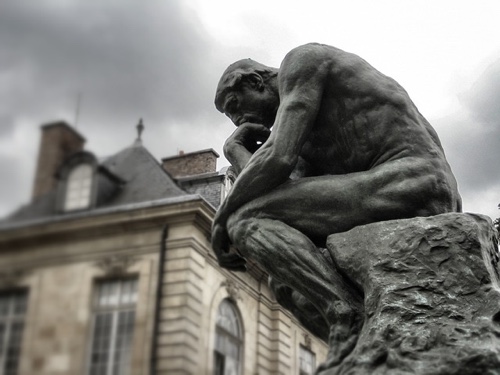Personal Productivity
Thinkers vs. Doers. How Both Styles Affect Your Personal Productivity
AUTHOR: Francisco Sáez"Thinkers think and doers do. But until the thinkers do and the doers think, progress will be just another word in the already overburdened vocabulary by sense." ~ François de la Rochefoucauld

There is a traditional dichotomy that divides people into two groups, thinkers and doers.
Thinkers are strategically and creatively minded, always open to new ideas to change or improve the way things are done. They like to invent and experiment, and are good at starting projects. They need to plan everything before acting.
Doers (entrepreneurs, actors) are people with the ability to execute actions. They know how to efficiently carry out processes they are already familiar with, and are good at completing projects. They jump into a task without a second thought.
Obviously, this is a rather simplistic differentiation. It defines two extremes within an infinite range of possibilities. We all have a part of thinker and a part of doer, although in each individual’s personality one of these qualities is usually predominant (sometimes even exaggerated). These are not two opposing qualities, but complementary. We need both to face anything in life.
At the collective level, both qualities are necessary in any team. In any company, there must be a proper proportion between these mindsets in order for the company to be both innovative and efficient. For a project to be successful, it must be able to alternate and iterate efficiently between both states, thought and execution, until the end result is achieved. There must be people who clearly define the work to be done and people who execute it effectively.
And on an individual level, each person must strike the right balance between their thinker side and their doer side. A great idea that fails to be implemented is worth absolutely nothing. And doing things without first thinking about the best way to do them can lead to wasting a lot of time and even being unable to finish them in acceptable conditions.
To be productive, you must be aware of what your weakest aspect is and put more effort into training it. If you are a thinker, you must structure your ideas into projects and define only the first tasks necessary to be able to jump into action as soon as possible. If you are a doer, busy all day long with a million things to do, you should stop to think from time to time and clarify the origin and purpose of all those tasks, so that you can manage them effectively.
One of the advantages of GTD (Getting Things Done) over other personal productivity methods is that it seeks to achieve that balance. Its workflow forces you to clarify all the things you must do before executing them and, in the same way, it allows you to execute the most important actions in your task inventory because you have already thought about them enough. Thinking and execution feed each other.
According to David Allen, creator of GTD, the big challenges in defining your work are, first, to think about what you are going to do and, second, to do something about what it is you are thinking about.
That’s why in the GTD work flow there is the clarification stage, so that you spend enough time thinking about what you are going to do about each new challenge. And that’s why there is the project list and the concept of weekly review. Having a complete and accurate project list allows you to reflect on it and update it at least once a week, which is essential to achieve productivity with minimum stress.
How do you balance your thinker and doer mentality?





No comments